Occupational Safety Training for Waterproof Phone Bag Manufacturing
99,000 ₫
Note: The above price is calculated per person and may vary depending on the number of trainees participating in the course and market fluctuations. For more accurate pricing information, please refer to the price list or contact our consultants directly.
Occupational safety is an important issue in factories producing waterproof phone cases and needs to be addressed promptly to ensure the health and safety of workers, as well as to enhance the reputation of businesses. The Occupational Safety Training course is an effective solution to raise awareness about accident prevention for workers involved in manufacturing waterproof phone cases.
Table of Contents
Toggle1. Overview of Waterproof Phone Pouches
a. What is a Waterproof Phone Pouch?
A waterproof phone pouch is a protective accessory designed to safeguard mobile phones from water and moisture. It is an effective solution for those who frequently encounter wet environments or want to protect their phones during outdoor activities such as swimming, snorkeling, boating, hiking in the rain, or even just walking in the rain.
Waterproof phone pouches are typically made from materials such as PVC, TPU (Thermoplastic Polyurethane), or other high water-resistant synthetic plastics. These pouches often have a transparent design that allows users to see and operate the phone’s touchscreen without removing it from the pouch.

b. Types of Machinery for Waterproof Phone Pouch Production
- CNC (Computer Numerical Control) cutting machines are used to precisely cut material sheets such as PVC, TPU, or other synthetic plastics into desired shapes and sizes. CNC technology ensures consistent and accurate cutting parts for the pouches.
- Ultrasonic welding machines use ultrasonic waves to weld parts of the pouch together without heat or chemical solvents. This process ensures waterproof and durable seams that prevent water ingress.
- Heat pressing machines are commonly used to seal edges and other parts of the pouch. The heat pressing process ensures water-tight and strong joints. These machines can also create details such as zippers or other accessories.
- Screen printing or digital printing machines are used to print logos, instructions, or other information on the waterproof pouches. Digital printing allows for highly detailed and precise printing.
- Leak testing machines check product quality after completion. These machines detect small holes or cracks invisible to the naked eye, ensuring each pouch meets waterproof standards.
- Laser cutting machines provide high precision and can cut complex, sharp details. They are useful for cutting material sheets or creating small details on the pouches.
- Automatic labeling machines apply labels, barcodes, or product information on the pouches quickly and accurately, helping streamline production and maintain labeling consistency.
- Automatic packaging machines help pack waterproof pouches after quality inspection, ensuring products remain protected and clean before reaching consumers.

c. Features and Benefits of Using Waterproof Phone Pouches
Main Features
- Waterproof capability: This is the most important feature. Waterproof pouches are usually certified under IP (Ingress Protection) standards, such as IPX7 (can withstand water up to 1 meter deep for 30 minutes) or IPX8 (can withstand water deeper than 1 meter).
- Dust and sand resistance: Besides water, these pouches protect phones from dust and sand, which is very useful for beach or outdoor activities.
- Buoyancy: Some waterproof pouches are designed to float on water, making it easier for users to find their phone if it accidentally falls into the water.
- Touchscreen compatibility: Waterproof pouches allow users to operate their phone’s touchscreen normally, even taking photos underwater.
- Secure sealing: Pouches typically feature zippers or sealing systems to prevent water from entering.
Benefits of Use
- Device protection: Reduces the risk of damage from water, dust, and other environmental factors.
- Convenience: Allows phone use without worrying about weather or environmental conditions.
- Flexibility: Suitable for various outdoor and travel activities.

d. Specific Jobs in the Waterproof Phone Pouch Production Factory
Group 1
- Executive directors, deputy directors, and department heads in the waterproof phone pouch production factory.
Group 2
- Safety officers: manage safety within the factory, design safety procedures, supervise and enforce employees’ compliance with safe work processes.
Group 3
- Material Cutting: Using CNC or laser cutting machines to cut materials according to designs.
- Welding and Pressing: Using ultrasonic welding and heat pressing machines to weld and seal pouch parts.
- Printing: Using screen printing or digital printing machines to print necessary information on pouches.
- Inspection: Using leak testing machines to ensure pouches are waterproof.
- Labeling: Attaching labels with automatic labeling machines.
- Packing: Packaging finished products with automatic packaging machines.
Group 4
- Office work, service, sales, and marketing.
- Production management, quality control, human resources management, materials management, financial and accounting management.
- Research and development of new products, design of product packaging and samples.
2. Overview of Occupational Safety Training for Waterproof Phone Pouch Production
In this article, we focus on issues related to Group 3, as Group 3 directly participates in the production process and faces the highest occupational safety risks. For information about other groups, see here.
a. What is Group 3 Occupational Safety Training?
- Group 3 occupational safety training consists of sessions that equip workers with awareness and methods to prevent occupational accidents.
- The safety training course helps workers recognize and avoid hazards, reducing the risk of occupational accidents during work.
REGISTER FOR OCCUPATIONAL SAFETY TRAINING SERVICE
b. Training Duration
Initial safety training duration
- The total training time is at least 24 hours, including examination time.
- 8 hours of theory on safety policy systems and labor hygiene laws
- 8 hours of theory on basic knowledge of occupational safety and hygiene
- 4 hours of theory on specialized training content
- 2 hours of practical training on specialized content
- 2 hours of theoretical examination at the end of the training course
The safety training center schedules training sessions depending on the availability of workers. Typically, there are 6 training sessions conducted over 3 days, provided the manufacturing company arranges continuous study time.
Periodic safety training duration
- Before the occupational safety card expires, workers wishing to renew it must undergo a periodic occupational safety training course, with a training duration of at least 50% of the initial safety training duration.
Explanation: The total duration of periodic occupational safety training is at least 12 hours, including examination time. After completing the periodic training and passing the exam, workers will be reissued or have their occupational safety card extended.
c. Training Content
| No. | TRAINING CONTENT | TRAINING TIME (HOURS) | |||
| Total | Including | ||||
| Theory | Practice | Examination | |||
| I | Policy system, laws on occupational safety and hygiene | 8 | 8 | 0 | 0 |
| 1 | Overview of legal documents on occupational safety and hygiene. | 6 | 6 | ||
| 2 | Standards and technical regulations on occupational safety and hygiene. | 1 | 1 | ||
| 3 | Specific regulations of state management agencies on occupational safety and hygiene in new construction, expansion, or renovation of facilities for production, usage, storage, and inspection of machinery, equipment, materials, and substances with strict occupational safety and hygiene requirements. | 1 | 1 | ||
| II | Basic knowledge of occupational safety and hygiene | 8 | 8 | 0 | 0 |
| 1 | Basic knowledge about hazardous and harmful factors at the workplace. | 4 | 4 | ||
| 2 | Methods to improve working conditions. | 1 | 1 | ||
| 3 | Safety culture in production and business. | 1 | 1 | ||
| 4 | Rights and obligations of employers and employees; policies and regimes on occupational safety and hygiene for employees; functions and duties of safety and hygiene networks and staff. | 1 | 1 | ||
| 5 | Safety and hygiene regulations, signs, safety and hygiene instructions, use of safety equipment, personal protective equipment; skills and procedures for first aid, accident prevention, and occupational disease control. | 1 | 1 | ||
| III | Specialized training content | 6 | 4 | 2 | 0 |
| Comprehensive knowledge about machinery, equipment, substances that generate hazardous and harmful factors; risk analysis, management of occupational safety and hygiene; safe working procedures with machinery, equipment, and substances requiring strict safety and hygiene controls. | 6 | 4 | 2 | ||
| IV | Final occupational safety training examination | 2 | 2 | 0 | 0 |
| Total | 24 | 22 | 2 | ||
See more training content for all 6 groups
d. Occupational Safety Card
After completing the occupational safety training and passing the exam, workers will be issued a safety card (commonly called the occupational safety certificate for Group 3).
The Group 3 safety card clearly shows information such as: full name, date of birth, specific job and working environment. It also includes training duration, official red stamp, and signature confirming completion of the training.
According to regulations on issuing safety cards as stated in Clause 2 of Article 24 of Decree 44/2016/ND-CP, there are two cases:
- If the employer and employee have a labor contract, the employer must sign, stamp, and endorse the safety card for the employee after they complete the training course and pass the exam from the occupational safety training provider.
- If the worker is freelance or seasonal, without a labor contract, the training unit must sign, stamp, and endorse the safety card after the worker completes the training and passes the exam.

3. Identifying Hazards Affecting Workers in the Production of Waterproof Phone Bags
CNC and Laser Cutting Machines
- Hazards: Cuts and burns.
Ultrasonic Welding and Heat Press Machines
- Hazards: Thermal burns and exposure to ultrasonic waves.
PVC and TPU Materials
- Hazards: Inhalation of fumes or dust from plastic materials, causing respiratory irritation or other health issues.
Printing and Automatic Labeling Machines
- Hazards: Hand or other body parts getting caught in machinery.
Electrical Equipment
- Hazards: Electric shock from contact with faulty equipment or wiring.
Repetitive Work and Heavy Lifting
- Hazards: Musculoskeletal injuries due to repetitive tasks or improper lifting of heavy objects.
Flammable Materials and Electrical Equipment
- Hazards: Fire or explosion caused by flammable materials or electrical faults.
Exposure to Industrial Waste
- Hazards: Contact with industrial waste may cause skin allergies or poisoning.

4. Safety Measures for Participating in Waterproof Phone Bag Production
Training and Education
- Occupational Safety Training: All workers must receive safety training before starting work. Training includes machinery operation procedures, use of personal protective equipment (PPE), and emergency handling measures.
- Regular Refresher Training: Organize regular sessions to remind and update knowledge about occupational safety, including how to detect and prevent new hazards.
Use of Personal Protective Equipment (PPE)
- Cut-resistant Gloves: Protect hands from cuts when working with CNC or laser cutting machines.
- Safety Glasses: Protect eyes from dust, debris, and laser light.
- Masks: Prevent inhalation of fumes and dust from plastic materials.
- Protective Jackets: Protect the body from dust and chemicals.
- Safety Shoes: Protect feet from heavy objects or falling debris.
Machinery and Equipment Management
- Regular Inspection and Maintenance: Conduct periodic checks and maintenance on all machines to ensure stable and safe operation.
- Safety Guards Installation: Ensure all machines are equipped with safety devices such as shields, emergency stop switches, and other protective systems.
- Standard Operating Procedures (SOP): Establish and implement SOPs for each machine type, ensuring workers know how to operate them properly and safely.
Work Environment Control
- Ventilation System: Ensure effective ventilation to remove fumes and dust from the air, providing a fresh working environment.
- Lighting System: Ensure adequate lighting in the work area to minimize accident risks due to poor visibility.
- Cleaning and Material Storage: Keep the workspace clean and organized, and store materials properly to prevent fire hazards or accidents.
- Periodically conduct occupational environment monitoring within factories to collect and analyze harmful factors affecting workers, then adjust and reduce risks to prevent occupational diseases.
Chemical Safety Measures
- Proper Chemical Storage: Flammable or hazardous chemicals must be stored separately with clear warning signs.
- Use Protective Equipment: When working with chemicals, workers must use appropriate PPE such as chemical-resistant gloves, masks, and safety goggles.
- Waste Treatment System: Set up an effective waste treatment system to prevent environmental pollution and protect workers’ health.
Fire and Explosion Prevention
- Firefighting Equipment: Equip fire extinguishers, fire alarm systems, and other fire prevention devices where necessary.
- Fire Safety Training: Organize fire prevention and firefighting training so workers know how to handle fire emergencies.
- Safety Rules: Strictly comply with electrical safety and flammable material storage regulations.
Worker Health Care
- Periodic Health Checks: Organize regular health screenings for workers to detect early work-related health issues.
- Rest Policies: Ensure workers have reasonable rest time to recover health and avoid excessive fatigue.
Incident Reporting and Handling System
- Safety Reporting System: Establish a system for workers to easily report hazards or incidents.
- Emergency Response Plan: Prepare emergency plans including first aid, firefighting, and evacuation to promptly respond to incidents.
5. Benefits of Occupational Safety Training for Waterproof Phone Bag Production
An Toàn Nam Việt provides enterprises with the following great benefits after completing occupational safety training courses according to the regulations in Decree 44/2016/ND-CP on occupational safety and hygiene. Companies, factories, and businesses will:
- Enable workers to recognize potential risks of workplace accidents and take preventive measures to avoid accidents.
- Help enterprises establish risk prevention measures in production, operation, and maintenance processes.
- Reduce costs related to workplace safety incidents.
- Ensure uninterrupted production to increase labor productivity and product quality.
- Comply with labor safety laws and avoid legal risks.
- Create credibility and professionalism, thereby enhancing the brand value of the enterprise.
Nam Việt’s training courses are a solution to prevent and counteract external factors impacting individuals so they can avoid dangers leading to injury or worse, death.
REGISTER FOR OCCUPATIONAL SAFETY TRAINING SERVICES
6. Customer Feedback After Completing Occupational Safety Training for Waterproof Phone Bag Production
An Toàn Nam Việt has many years of experience accompanying numerous enterprises across Vietnam in general and Southern provinces in particular. This responsibility is extremely precious to Nam Việt, which is why our Occupational Safety Training is increasingly professional. Our growth is driven by positive feedback and suggestions from businesses. Below are testimonials from partners we have served.
Hoa Dat Construction and Trading Joint Stock Company
“Nam Việt’s service greatly helped us simplify occupational safety and complete safety documentation for our work processes. The consulting team was enthusiastic and prompt in answering our questions. 5 stars for Nam Việt.”
See more customer interviews after using An Toàn Nam Việt’s services
7. Occupational Safety Training Capacity of An Toàn Nam Việt
An Toàn Nam Việt is a reputable and quality occupational safety training center in Vietnam today. Our training sessions are continuously held at production workshops, factories, or construction sites nationwide (all 63 provinces in Vietnam).
REGISTER FOR OCCUPATIONAL SAFETY TRAINING SERVICES
Occupational Safety Training License
- An Toàn Nam Việt has been inspected and certified by the Safety Department of the Ministry of Labor, Invalids and Social Affairs, confirming our qualification to conduct occupational safety and hygiene training. This further strengthens our training capabilities.

Materials and Lectures
- Before being used in occupational safety training courses, our materials are reviewed and approved to ensure correctness and effectiveness.
- Our instructors’ teaching methods are standardized according to An Toàn Nam Việt’s standards, developed by experts in occupational safety training to maximize knowledge absorption for trainees.
Facilities
- Controlling factors in the training rooms positively affects teaching efficiency and knowledge absorption.
- Our training facilities include spacious classrooms meeting standards for space, lighting, and equipment.
8. Nationwide Reputable and Quality Safety Training Center
At An Toàn Nam Việt, we prioritize the dedication to occupational safety training as our top priority. For us, imparting knowledge on self-protection to workers equips them with safety on their livelihood journey, contributing to national development.
To ensure effective training, we carefully prepare every detail, from tools and teaching equipment to curriculum, materials, sound, and lighting.
Our occupational safety trainers are experts with many years of experience. Some have even conducted research on hazard identification across various industries and prevention methods.
Our lectures are practical and delivered in a lively, easy-to-understand way for workers. This helps learners stay comfortable and effectively absorb our teachings. Naturally, the content strictly follows Decree 44/2016/ND-CP.
As a result, learners understand many hazard prevention measures and how to protect themselves, applying them appropriately in their work.
Our training center proudly provides professional and reputable occupational safety training services with advantages such as:
- Competitive training costs while maintaining quality.
- Flexible training schedules adapted to company production situations.
- Fast and lawful certification issuance procedures.
- Experienced instructors with many years in the field.
- Classrooms controlled for factors affecting teaching efficiency and knowledge absorption.
- Training materials tailored to occupational safety in enterprises.
- An Toàn Nam Việt works diligently and professionally to support customers accurately and quickly.

9. Additional References for Occupational Safety Training Materials for Waterproof Phone Bag Production
- Occupational Safety Training Materials for Waterproof Phone Bag Production
- Occupational Safety Training Document Set
- Occupational Safety Training Test Set
- Occupational Safety Training Curriculum for Waterproof Phone Bag Production
- Occupational Safety Test for Waterproof Phone Bag Production
No comments yet


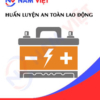
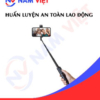



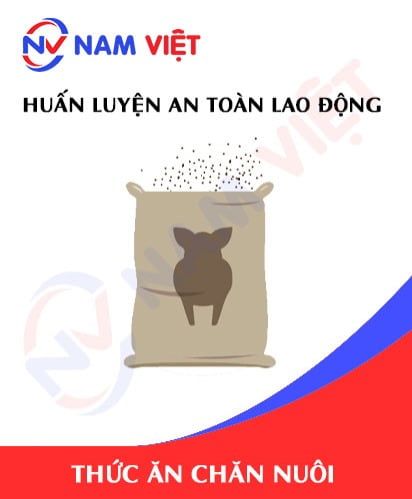
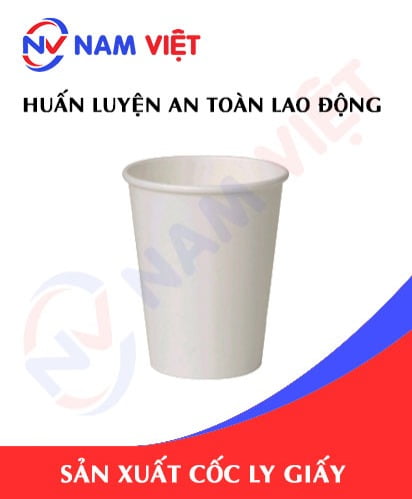
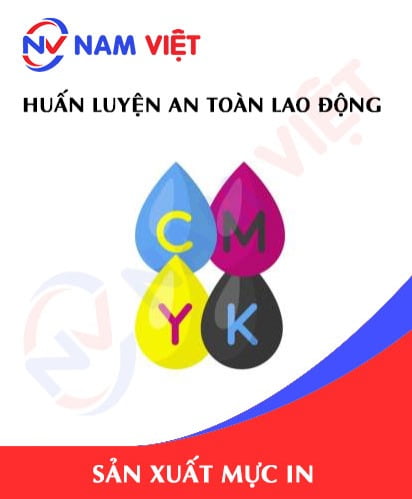
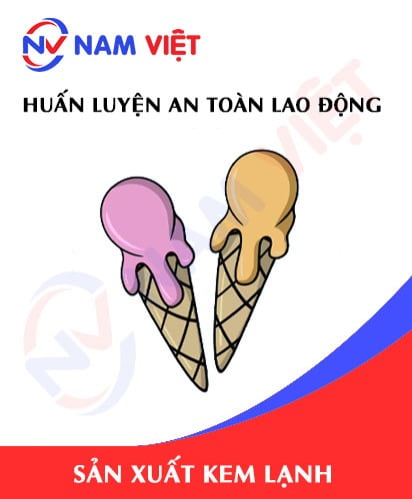
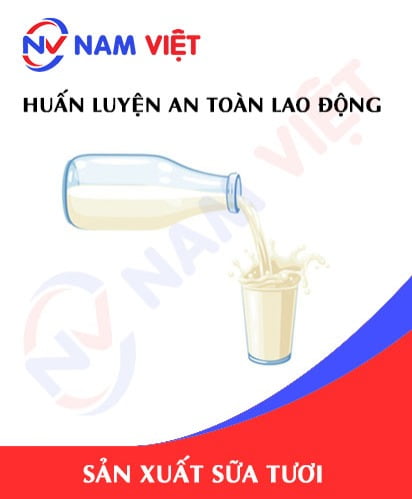
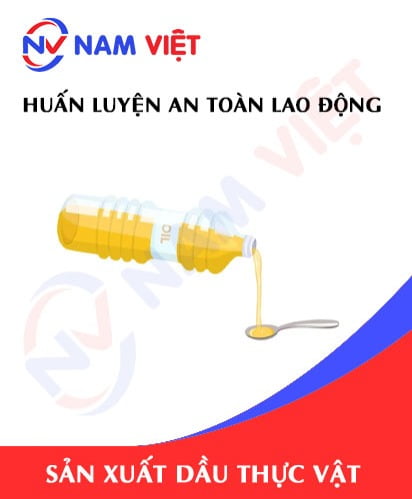
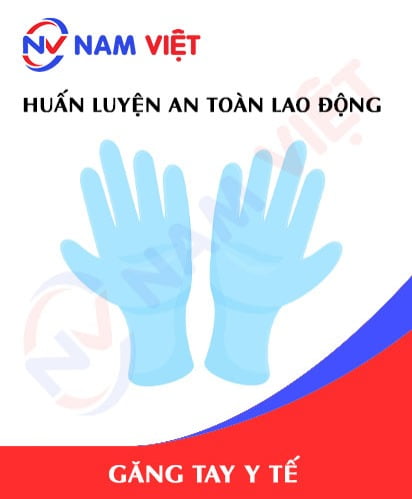
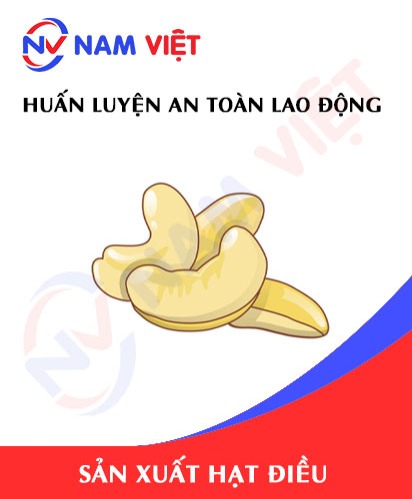
Review Occupational Safety Training for Waterproof Phone Bag Manufacturing
There are no reviews yet.